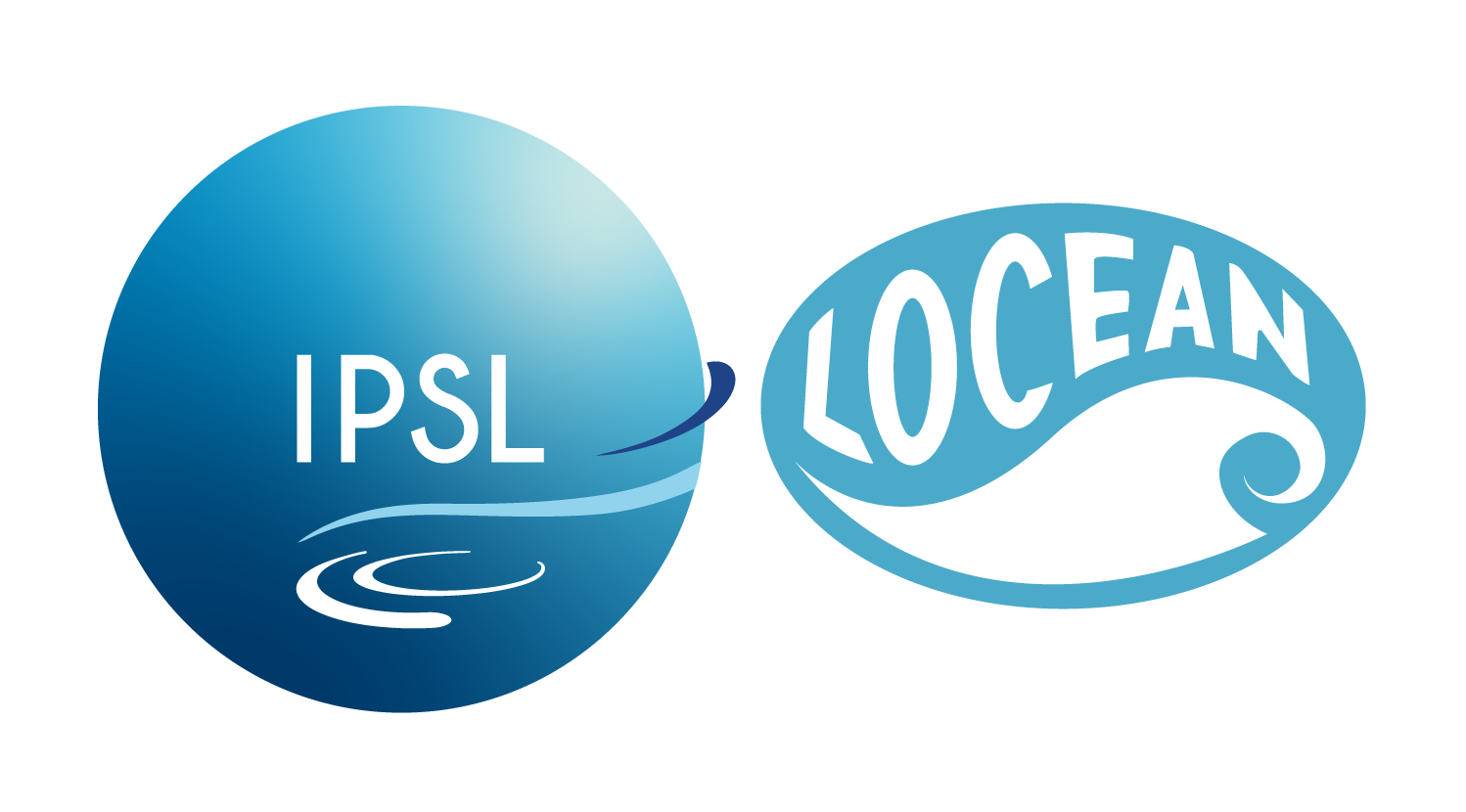Les offres
Si tu es intéressé·e par une offre de stage, rapproche-toi de l’équipe pédagogique de ta formation, pour faire valider l’offre de stage proposée.

Retrouve toutes les offres de stage et d’emploi.

 06-10-2025
06-10-2025
 Se ferme:
02-11-2025
Se ferme:
02-11-2025
 Vues: 59
Vues: 59

Context
Silicon (Si) is a key nutrient for diatoms, a group of siliceous phytoplankton that account for ~40% of global marine primary production and play a central role in the biological carbon pump. Diatoms incorporate dissolved silicon (silicic acid, DSi) into their frustules as biogenic silica (bSi), which can then dissolve in the water column or sink to depth, linking the Si and carbon cycles. Unlike organic carbon, which remineralizes quickly, bSi is relatively well preserved, making it a valuable tracer of past and present ocean productivity. Recent advances in silicon isotopes (δ³⁰Si) have transformed our understanding of Si cycling in the Southern Ocean, Atlantic, Pacific, and Arctic, but the Mediterranean Sea remains unexplored with no Si isotope data published so far (Sutton et al., 2018a,b). This knowledge gap is striking given the basin’s key role in Mediterranean Water, the “mini-ocean”, on global thermohaline circulation as well as on the regional productivity hotspots in the Gulf of Lions and Ligurian Sea (Durrieu de Madron et al., 2011; Leblanc et al. 2005; Severin et al. 2014). Moreover other silicifiers such as silicoflagelates or rhizarian can be present and their role in silicon cycle as well as deep silica maximum (Crombet et al. 2011) and on δ³⁰Si signature is unknown.
This internship is embedded in the Marie Skłodowska-Curie Action project SiCyMBSIA , which investigates silicon cycling in the Mediterranean and Black Seas using cutting-edge isotopic techniques. This internship will contribute to filling this gap by quantifying biogenic silica and measuring Si isotopes in water column samples from the Mediterranean Sea and couple them to Scanning Electron Microsocope (SEM) observations from surface plankton. The student will gain hands-on experience in Si isotope chemistry (bSi digestion, spectrophotometry, advanced mass spectrometry), microscopy (SEM), and, where relevant, basic taxonomy to distinguish whether diatoms or other silicifiers dominate the assemblages.
Objectives
- To measure biogenic silica (bSi) concentrations (Ragueneau et al., 2005) and characterize the silicifiers community mostly in the euphotic layers of the Mediterranean Sea with a focus on the Corso-Ligurian Basin.
- To acquire Si isotope data of DSi and bSi, including from the unique DYFAMED sediment trap time series and assess the seasonality of the Si cyle and limitation (e.g. as in Closset et al., 2016, 2015).
- To assess spatial and vertical variability of silicon cycle in relation to surface phytoplankton, nutrient availability and Mediterranean specific thermohaline circulation (e.g as in Sutton et al. 2018b).
Methodology and tasks
- Sample Preparation and bSi Analysis: Biogenic silica will be extracted from the filters using alkaline digestion and quantified via spectrophotometric determination of dissolved silicic acid. Samples are available from the GEOTRACES MedBlackSea cruise (GA04, 2013), MOOSE cruise (2025) and DYFAMED sediment traps.
- Scanning Electron Microscopy (SEM): for the identification of diatoms and other silicifiers in surface.
- Plasma Mass Spectrometry (ICP-MS and MC-ICP-MS): δ³⁰Si isotope measurements
- Data Analysis: The student will compile the results and compare them to identify patterns of diatom-driven silica cycling.
Main supervision by Diksha Sharma (post-doc) and Damien Cardinal (LOCEAN)
Collaborations with Laurent Coppola and MOOSE & DYFAMED team (LOV, Villefranche), Arnaud Dapoigny (LSCE, Saclay), Sandrine Caquineau (LOCEAN)
Lab work : mostly on Campus Pierre et Marie Curie (SU) + some analyses at LSCE (Saclay)
Motivation, Duration and Schedule
6 months (full-time internship), January 2026-June 2026. Candidate should be motivated by lab work (analytical, chemical sample process in clean lab, observations with SEM…) in an English speaking environment with the post doc. No field trip is scheduled since samples have already been collected.
Expected Outcomes
- A dataset of surface biogenic silica and δ³⁰Si in the Mediterranean Sea as proxy of Si limitation for silicifiers.
- Insights into the contribution of diatoms and/or silicoflageletes to primary productivity in this basin.
- Hands-on training in marine biogeochemistry techniques, including sample handling, chemical analyses, microscopy and taxonomy, and data interpretation.
- Scientific writing and presentation skills.
- Experience working in an international research project on climate-relevant marine processes.
References
Closset, I., Cardinal, D., Bray, S. G., Thil, F., Djouraev, I., Rigual-Hernández, A. S., & Trull, T. W. (2015). Seasonal variations, origin, and fate of settling diatoms in the Southern Ocean tracked by silicon isotope records in deep sediment traps. Global Biogeochemical Cycles, 29(9), 1495-1510f. https://doi.org/10.1002/2015GB005180
Crombet, Y., Leblanc, K., Quéguiner, B., Moutin, T., Rimmelin, P., Ras, J., … Pujo-Pay, M. (2011). Deep silicon maxima in the stratified oligotrophic Mediterranean Sea. Biogeosciences, 8(2), 459–475. https://doi.org/10.5194/bg-8-459-2011
Durrieu de Madron, X., Guieu, C., Sempéré, R., Conan, P., Cossa, D., D’Ortenzio, F., … Verney, R. (2011). Marine ecosystems’ responses to climatic and anthropogenic forcings in the Mediterranean. Progress In Oceanography, 91(2), 97–166. https://doi.org/10.1016/j.pocean.2011.02.003
Leblanc, K., Raimbault, P., Garcia, N., & Luminy, C. De. (2005). Efficiency of the silicate pump at a coastal oligotrophic site in the Mediterranean Sea. Biogeosciences, 2, 219–229.
Ragueneau, O., Savoye, N., Del Amo, Y., Cotten, J., Tardiveau, B., & Leynaert, A. (2005). A new method for the measurement of biogenic silica in suspended matter of coastal waters: using Si:Al ratios to correct for the mineral interference. Continental Shelf Research, 25(5–6), 697–710. https://doi.org/10.1016/j.csr.2004.09.017
Severin, T., Conan, P., Durrieu de Madron, X., Houpert, L., Oliver, M. J., Oriol, L., … Pujo-Pay, M. (2014). Impact of open-ocean convection on nutrients, phytoplankton biomass and activity. Deep Sea Research Part I: Oceanographic Research Papers, 94, 62–71. https://doi.org/10.1016/j.dsr.2014.07.015
Sutton, J. N., André, L., Cardinal, D., Conley, D. J., de Souza, G. F., Dean, J., … Swann, G. E. A. (2018a). A Review of the Stable Isotope Bio-geochemistry of the Global Silicon Cycle and Its Associated Trace Elements. Frontiers in Earth Science, 5, 112. https://doi.org/10.3389/feart.2017.00112
Sutton, J. N., de Souza, G. F., García-Ibáñez, M. I., & De La Rocha, C. L. (2018b). The silicon stable isotope distribution along the GEOVIDE section (GEOTRACES GA-01) of the North Atlantic Ocean. Biogeosciences, 15(18), 5663–5676. https://doi.org/10.5194/bg-15-5663-2018
MOOSE: https://www.moose-network.fr/
GEOTRACES: https://www.egeotraces.org/
